Plant Profiles dive deep on one plant variety each month. They are meant to provide you with enough information to make good growing decisions. A desire to grow gorgeous flowers is one thing. However, discerning if a particular plant is right for you and your climate is a whole other ballgame.
My intention here is to give you as much practical information to make these decisions. However, I’m going one step further and taking you completely behind the scenes to share exactly what has worked for us as well. For this reason, Plant Profiles are broken up into what I’m calling the “Nuts and Bolts (N&B)” and “Behind the Scenes (BTS).”
If you haven’t already, please be sure to read the FFY Introduction to learn more about how Plant Profiles are organized.
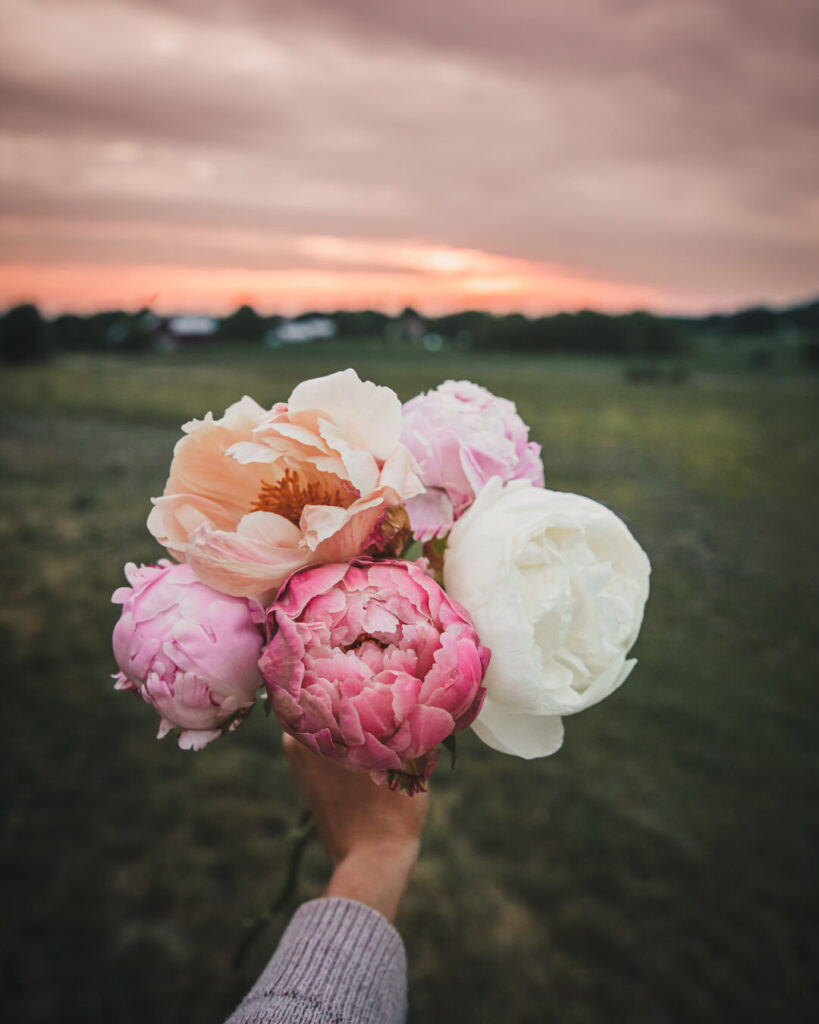
Primary Sources
The primary sources for the N&B portion come from:
- Postharvest Handling of Cut Flowers and Greens: A Practical Guide for Commercial Growers, Wholesalers & Retailers (Dole, Stamps, Carlson, et al).
- Specialty Cut Flowers, 2nd Edition, Revised & Enlarged (SCF): Industry standard for both new and experienced growers on the production of annuals, perennials, bulbs, and woody plants for fresh and dried cut flowers (Allan M. Armitage and Judy M. Laushman)
- BOSTON Ornamental Terminal Prices. Specialty Crops Market News Federal – State Market News Service, USDA (as of 14-FEB-2023
- Alaska Peony Cooperative
- Free Webinar: Peony Planting, Harvesting, & Selling with Dave Dowling. Gardener’s Workshop.
- Skutnik, E.; Rabiza-Świder, J.; Jędrzejuk, A.; Łukaszewska, A. The Effect of the Long-Term Cold Storage and Preservatives on Senescence of Cut Herbaceous Peony Flowers. Agronomy 2020, 10, 1631. https://doi.org/10.3390/agronomy10111631
Zone Considerations
- Dowling references Zone 3–8
- SCF references Zones 3–8
- My farm, Petal Back Farm, is located in Zone 4b Wisconsin
General Information: N&B
- Latin Name Name: Paeonia
- Common Name: Peony
- Origin: China, Japan
- Life Cycle: Perennial, Zones 3–8
- Spacing: At least 2 feet between plants
- Height: 2–3′
Modern hybrid peonies are the result of persistent breeding for both landscape and cut-flower production, but interestingly, peonies have been prized for thousands of years for medicinal purposes! Peonies were farmed on hundreds of acres in the Midwest during the 1930s and are making a comeback (SCF) (being from the Midwest, I found this fact particularly interesting).
According to SCF, “A minimum of 5 years is needed before peonies become profitable. Capital during the first 3 years is spent on plants, soil improvements, cultivating, and overhead expenses. Only during the following 2 years will plants produce sufficient stems to realize a profit.” Most growers do not harvest blooms for the first few seasons in order to allow the plants to put energy into the root system, but some growers anecdotally report harvesting off of one-year plants with no issue (though it’s common for new plants not to produce buds/blooms early on). A well-tended peony can last for 50 years or longer (APC).
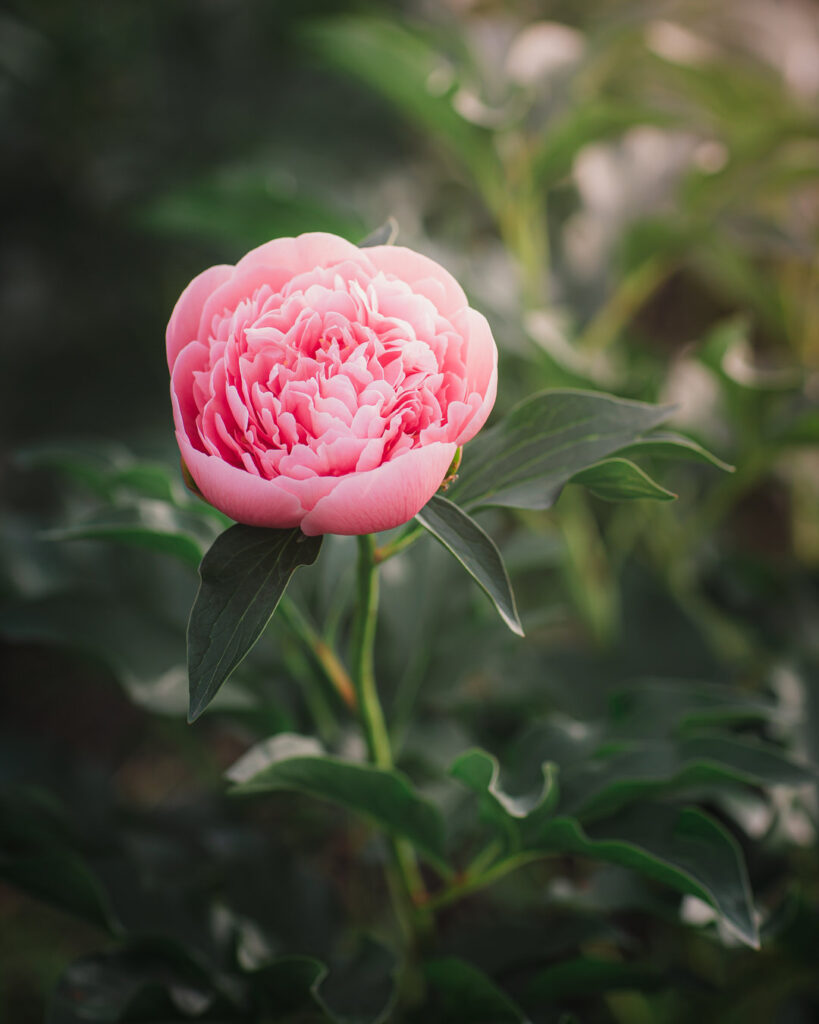
General Information: BTS
I absolutely adore peonies and they have been a big part of our farm story. They are the first flower I ever really paid attention to, back when I thought flowers were frivolous and didn’t have room for them in my garden (lol, it’s true, veggies only, HA!).
At our first home, we moved in during the winter, so we had no idea what was growing there. In the spring, we were absolutely surprised to find that a past owner had planted hundreds of perennial flowers (tulips, narcissus, lilacs, lilies, and PEONIES).
There were 50ish peony plants throughout the property. And my camera was completely drawn to them. When we sold that house, I would cut flowers and place them in vases for prospective buyers. Everyone always asked if we took the peonies with us, and we did not (I felt that they belonged there), but I’ll always credit them with sparking my interest in flowers. I also think my Great Grandma Marge had a hand in it (just like the time I was sent 165 bareroot peonies on accident).
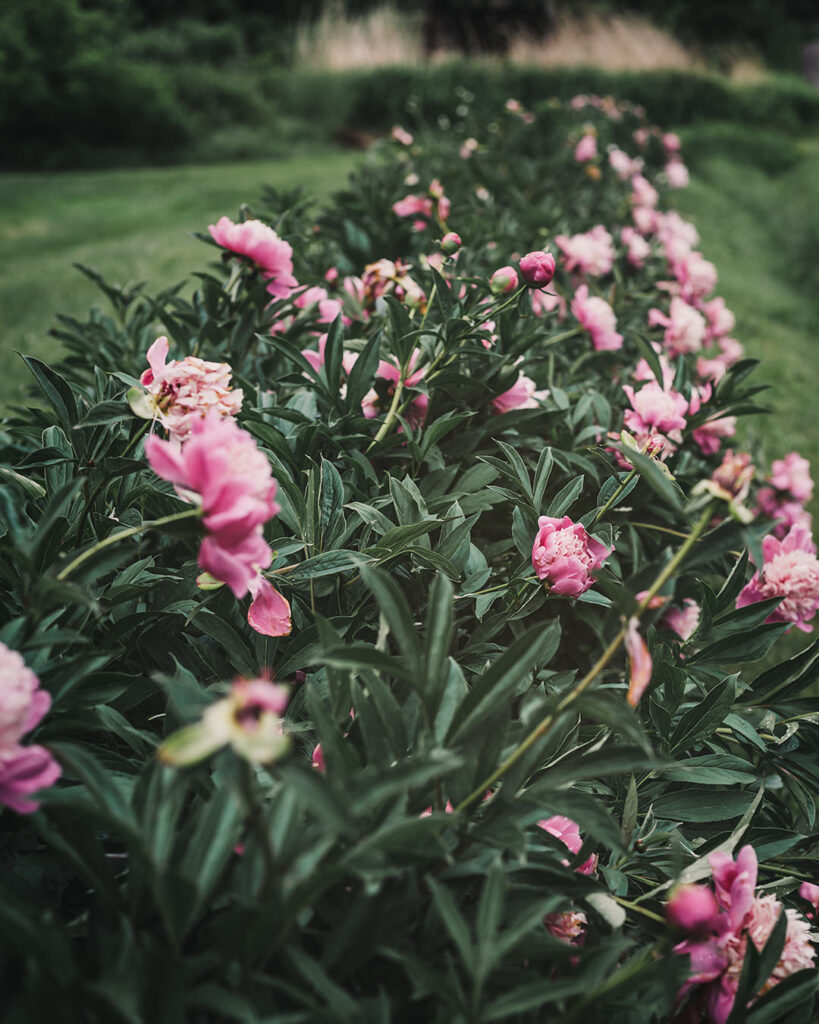
Anyway, I wanted to dedicate one of the plant profile months to peonies, because they are an *excellent* cut flower for a flower farm. Thus far, we’ve really only discussed annuals, but perennials (which peonies are) play an important role for the farmer-florist.
As we continue on this farming path, I am feeling more and more called to perennials. I jokingly refer to them as my retirement plan, but there is some truth in that! I hope to do this for a long time, but I’m aware that farming in my late 50s will probably look different than it does today in my late 30s.
When you’re just starting out, investing in perennials can feel like a lot, but those investments pay off. Once established, they are also far less labor than annuals. If you have the capital, most flower farmers I connect with say their only regret with perennials is not planting them sooner.
What I love most about peonies as a cut flower:
- Easy to grow
- Very few pests
- Bloom during the gap between spring flowers and summer annuals
- Showstopping blooms
- Premium bloom (premium price tag)
- Strong stems
- Great for design
- Perennial (purchase once, plants last for many years, basically a grower’s lifetime if properly cared for)
- Long storage extending sales window
- Many have wonderful fragrance
- Popular with florists, wholesale, and retail customers
- Nostalgic flower
- Can sell by the bunch
But every rose has its thorn, right? Potential shortcomings:
- Higher upfront investment
- Usually not immediately profitable
Propagation: N&B
Plants are typically purchased as divided crowns and transplanted into the field. The stem buds or eyes are formed at the top of the crown and are the beginning of the next year’s growth. Most growers plant bareroot peonies in the fall (though they can be planted in the spring).
Peonies are typically sold as 2-3 eye or 3-5 eye, so what’s the difference? Time versus expense: 2-3 eye peonies will be less expensive than 3-5 eye, but 3-5 eye should produce one year sooner (Dowling).
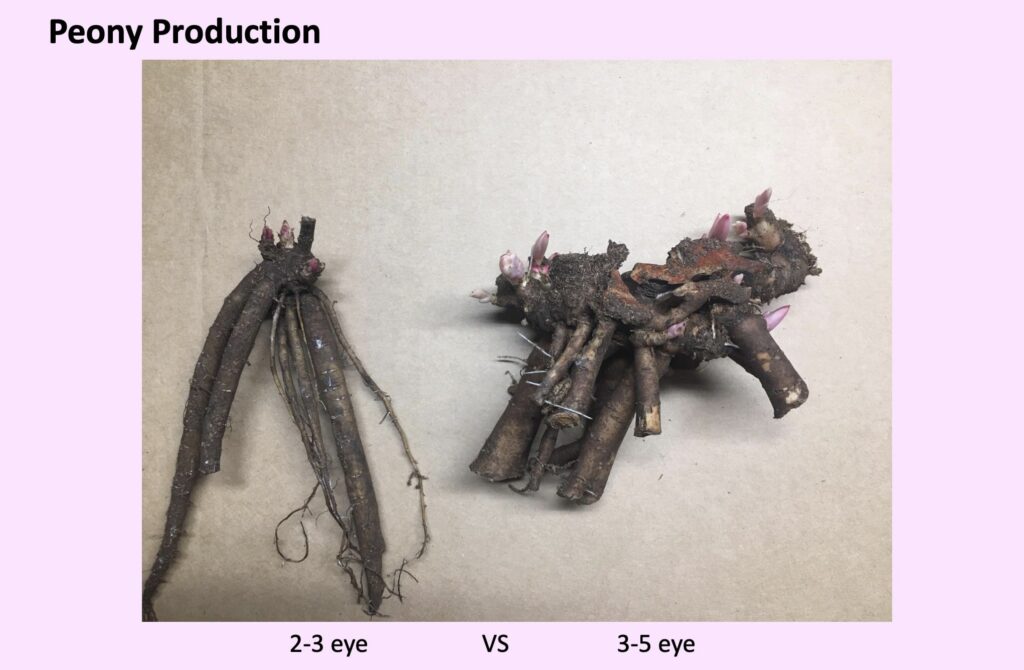
A note on transplanting: If you need to transplant your peonies to a new spot or are able to purchase some established plants from a grower, they can be transplanted any time that they are dormant (Dowling). This means after a hard frost in the fall or before they break dormancy in the spring. Dowling notes that if you move the entire root, it should not set them back.
Propagation: BTS
We plant bare root peonies in the fall and we always opt for 3–5 eye peonies.
Environmental Factors: N&B
For successful peony production, low temperature in winter needs to fall below 40F (4C) for at least six weeks (Dowling). SCF notes that flower bud dormancy may be broken with as little as 4 weeks at 43F (6C), but increasing time to 6 weeks or lowering temperature to just above freezing for 4 weeks increases the amount of flowering shoots.
Peonies prefer a well-drained soil with a pH of 6.0–7.0. While full sun is ideal, peonies may tolerate partial shade (though Dowling says they really should be planted in full sun and will decline if too much shade).
Environmental Factors: BTS
Here in Zone 4, our winters are plenty cold, so sufficient chilling time is not a concern (and you will find peonies in gardens all throughout the midwest).
Planting: N&B
It’s important to plant peonies at the proper depth. The ideal depth is to plant so that the eyes are 1–2 inches below the soil. This is deep enough to protect them from cold winter temperatures, but if they are planted deeper than 2 inches, they may fail to flower. Plants should be placed at least 24″ apart. Some grow in single rows, with plants spaced 24” apart, while others grow double rows, 18” apart, with plants 24” apart, staggered spacing. Most sources recommend planting 6 weeks before the ground freezes.
Planting: BTS
We plant our peonies exactly as recommended at a depth of 1–2 inches below the soil line. We use double-row spacing: 24” apart, with plants 24” apart, staggered spacing. I find that you can plant peonies fairly late. I’ve had some major wholesale order delays and have planted mid- to late-November (in Zone 4) with zero issue.
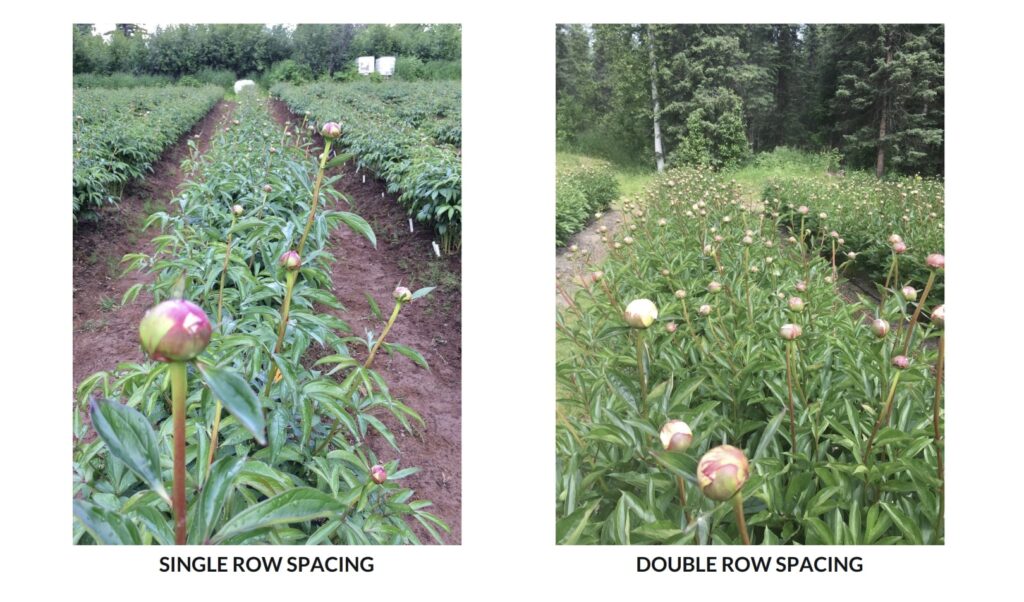
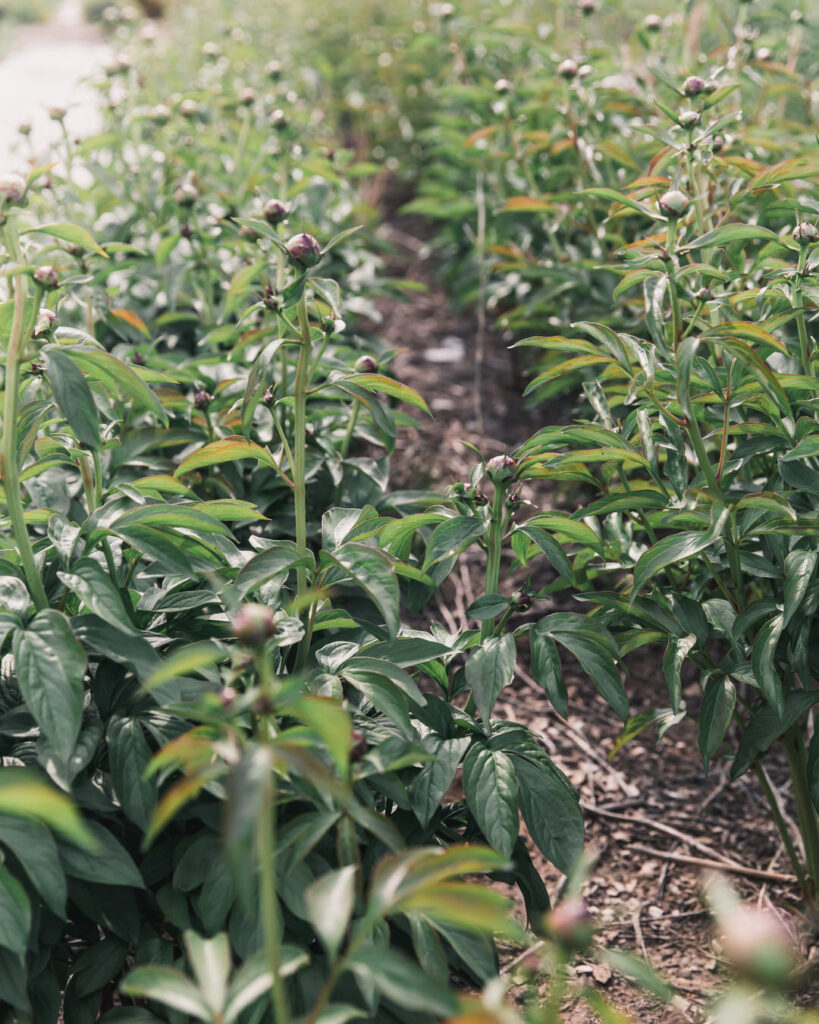
Succession & Groups: N&B
Since peonies are perennials, they are not succession planted, but they are categorized into groups based on bloom time: early, mid, and late. Dowling notes that this can extend harvest by about 15–20 days (from early to late). To further extension, growing under cover has been shown to advance peony bloom by nearly one month (Dowling & USU). Dowling recommends adding a structure (low or high tunnel) over the peonies after the plants are more mature, so as not to waste plastic on plants that won’t be harvested for two years.
Successions & Groups: BTS
We grow peonies from each group to extend bloom time. I found the study by USU of growing peonies under cover interesting. I had a few extra (but small, less eyes) bareroot peonies from an order last year, so I did put them in the tunnel. Not so much for production, but just to see how they do. As previously noted, I am extremely interested in the perennial game (we have roses in our high tunnel, and I’m loving it so far). While we love this spot, we’ve always known that it’s not our forever spot/home, but I am increasingly curious about the potential of extending perennial crop seasons.
Nutrition: N&B
Most growers recommend amending soil based on a test and periodically testing thereafter. SCF recommends side dressing peonies with a balanced fertilizer in the fall and again in the spring after stems have emerged.
Nutrition: BTS
If you’ve been around FFY, you know that we fertilize our soil organically based on a soil test. If you’re new, you can access this PDF that breaks down exactly what we do.
Irrigation: N&B
Peonies are particularly prone to botrytis, so most sources recommend watering via drip line (i.e., keep water off of the foliage). Dowling notes that water is particularly important for new plants, as well as during the summer when new eyes are forming.
Irrigation: BTS
I hate to even admit this, but last year, we were so busy, our peonies did not get drip lines. They’re in a separate field on the farm and I thought they’d be OK with the natural rainfall (despite our sandy field, which is 80% sand). Peonies certainly are tough and resistant, but I could tell that the youngest plants from that season (now in their 2nd season) aren’t as vigorous as I would have expected compared to previous years when older plants had drip lines (hard lesson learned).
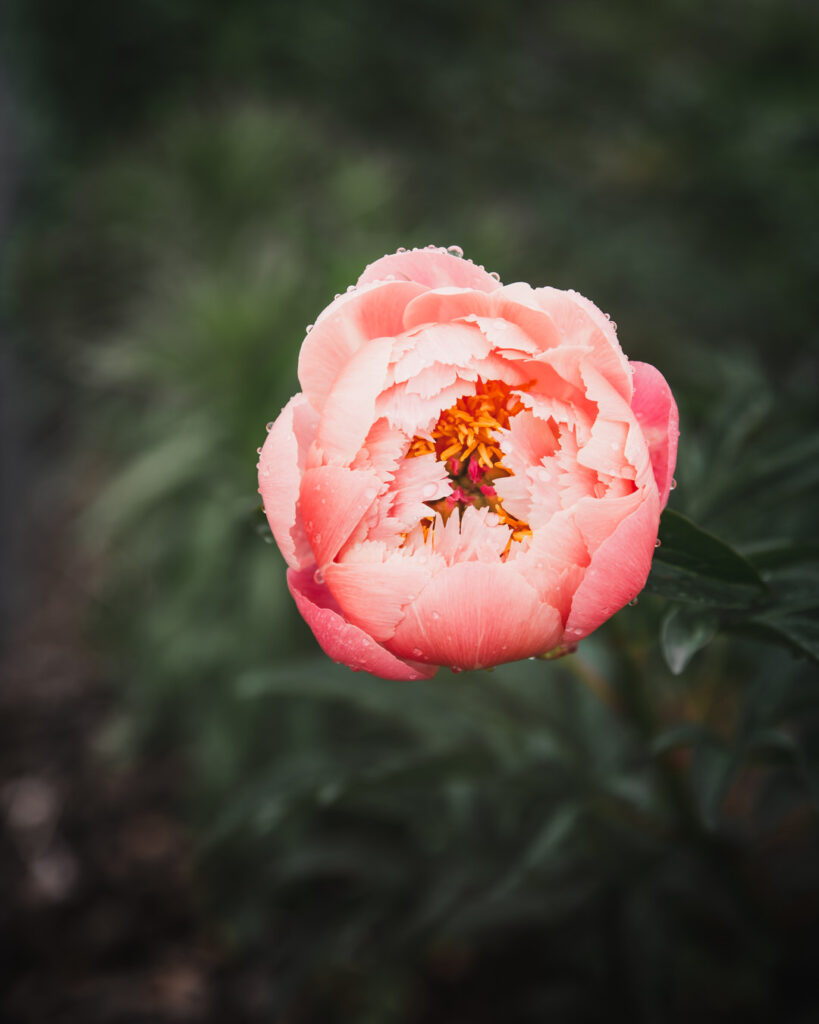
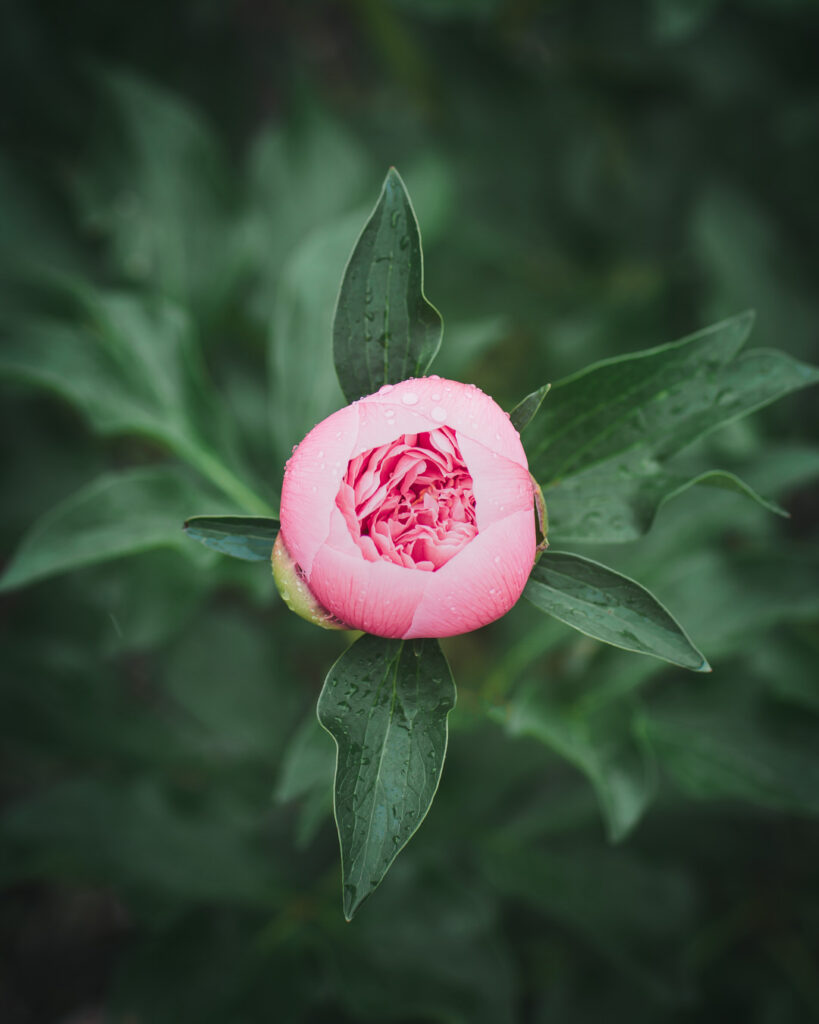
Mulch: N&B
SCF notes that mulch will not hurt plants for a year or so, but that continuous mulching causes buildup, reducing oxygen and water penetration to the roots, and that eventually the roots are buried too deeply. Some growers report that the roots will eventually find their proper depth, but others note that mulching (or planting) too deep results in fewer blooms and weaker stems. Similarly, Dowling says mulch is fine but that you don’t want it to build up too high (remember, planted deeper than 2 inches can inhibit flowering). He recommends using landscape fabric and instead of burning holes, cut an “X” in (with the grain to avoid unravelling) and this will help with weed suppression.
Mulch: BTS
Big facts, I love mulch. We mulch our dahlias hardcore. Same with the roses. I’ve been SO tempted to mulch the d@mn peonies, but I ultimately do not (other than grass clippings and a super small amount of mowed down debris). I’m too nervous it will do more harm than good, but oy, weeding the younger peonies certainly is a chore.
However, when I look at our mature plants, they don’t need mulch. And when I look at beautiful mature plants in our area, no one mulches their peonies (at least not heavily). They are mostly just mowed around the plants and they are beautiful. The peonies at our first home, Matt did nothing more than mow around them and cut them down to the soil line in the fall, and they produced beautifully. It’s the same at our little AirBnB.
I’ve come to the conclusion that the plants likely need a little help and weeding early on, but they should be fine without mulch once mature (curious if you’ve experienced anything different). We do have landscape fabric in the pathways, but not in the actual rows. I may experiment with Dowling’s rec of landscape fabric in the actual rows (at least for the first few years. It should be noted that this may warm the soil too much in more-southern regions.
Disbudding: N&B
Disbudding in this section refers to disbudding the lateral or side buds on an established, mature peony plant. We’ll discuss when you can start harvesting peonies (including disbudding all the buds on establishing plants) in the Harvest section. Why disbud the lateral buds? Some growers report that the main bud will be larger, while others say this does not make a difference (SCF). Disbudding lateral side buds is also about expectation. Most wholesalers will expect peonies to be disbudded. Florists may also expect this too, but they also may not. For retail or farmer’s markets, they can be left on. If disbudding, the ideal time is when they are the size of a pea (Dowling).
Disbudding: BTS
We disbud the smaller lateral buds on our peonies. I just think it looks nicer.
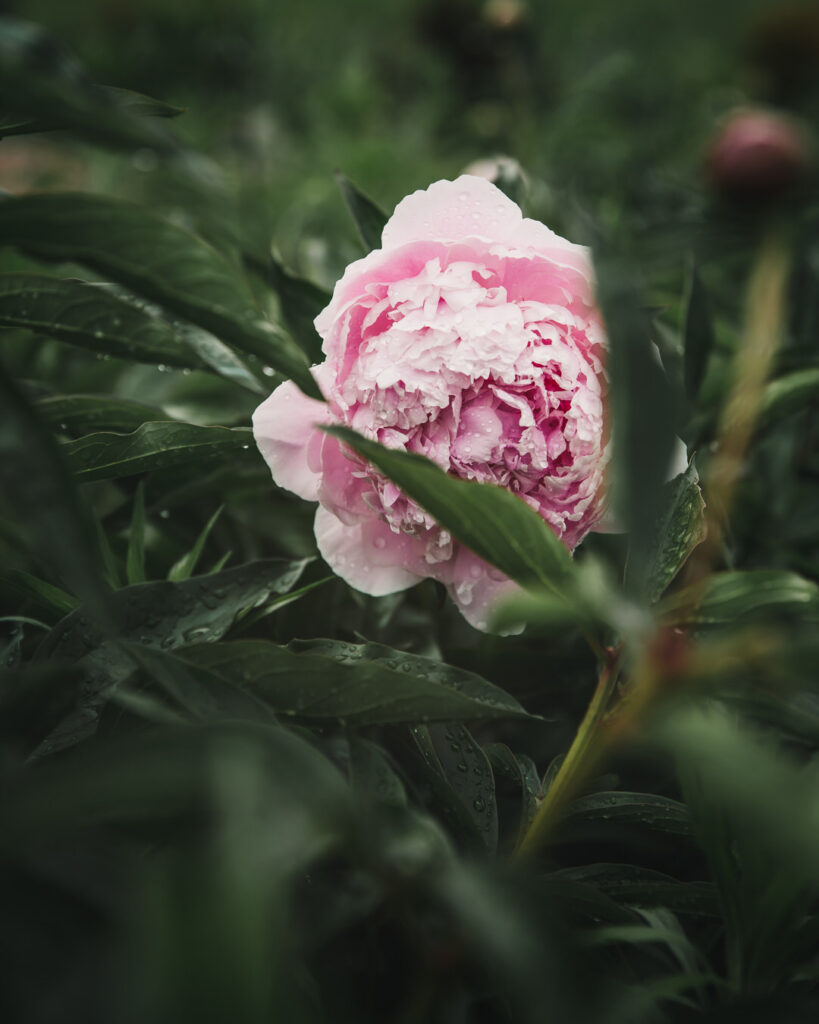
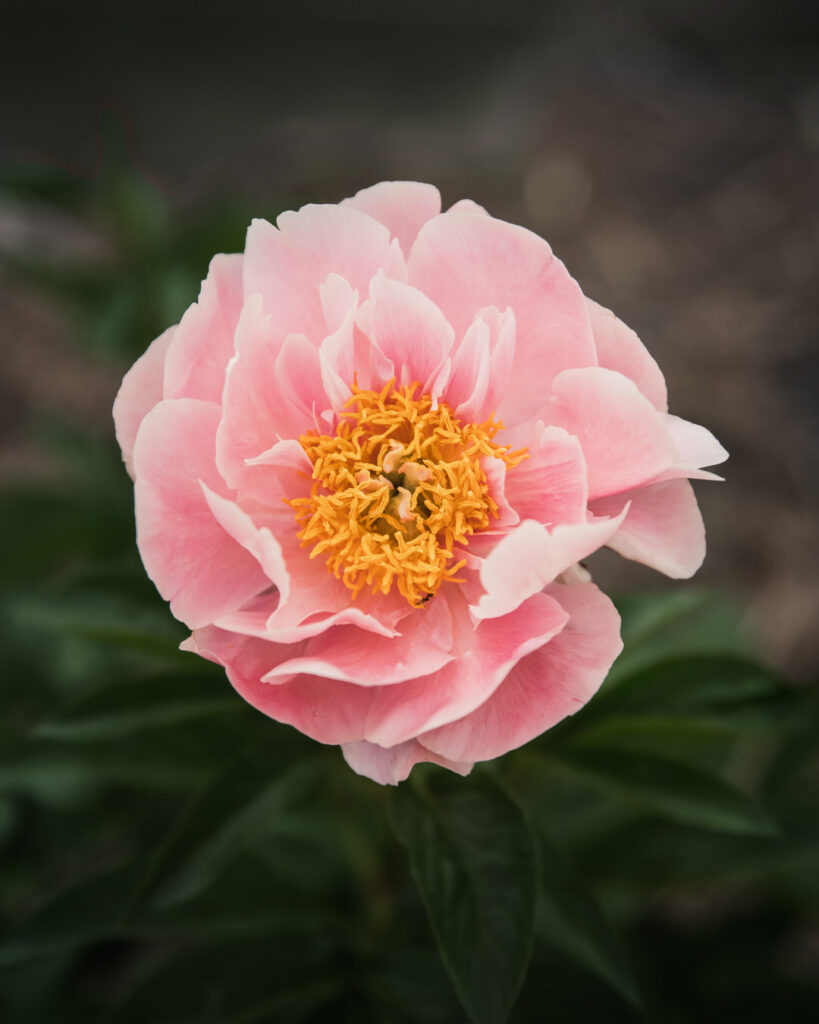
Bloom Period: N&B
Bloom period is highly dependent on geographic location, environmental factors, and whether forcing, growing in a tunnel, or in the field. The length of time peonies may be harvested also depends on the use of early-, mid-, and late-season cultivars. Dowling notes that planting varieties early to late extends the season by about 15–20 days. Also, as noted previously, a structure can extend the season by almost a month earlier.
Bloom Period: BTS
On our farm, peonies bloom pretty much the entire month of June.
Harvest: N&B
The big debate: When can you start harvesting peonies after you plant a new crop? Most growers recommend allowing plants to establish for a few years before harvesting peonies. In fact, peonies may not even produce flowers their first year.
OK, so how many years? Some say 2 years, 3 years, 4–5 years, yet others note that they started harvesting peonies right away in their first year. So what do you do?
First, this will have a lot to do with the size of the root (how many eyes it had). Second, Dowling offers great advice. If you planted in October (or the fall 2021), don’t harvest them the next spring (2022). In the following season (2023), if you are judicious with the plants, and can pick a few stems while leaving sufficient foliage, you should be fine. If the plant only has two stems and two buds, then you wouldn’t pick them both because then you’ll be setting the plant back.
In other words, after two winters, if you can harvest stems while leaving back foliage, it’s OK to harvest and start making a profit. He comically says that some will recommend waiting 4 or 5 years, but you could be dead by then LOL. If you can start making money off of that investment after two years (two winters), then in his book, start making money off that investment!
If you are not harvesting blooms to let the plant establish, you can remove all of the blooms (simply cut them right below the bud). However, you an also let them bloom to verify that you got the correct variety and then either deadhead the bloom or cut it above the foliage and place in a bud vase. The most important factor is cutting the bloom before it goes to seed, as this is what takes the most energy from the plant (Dowling)
Only harvest stems as long as you need them. Dowling recommends a length of your finger to your elbow. Leave behind as much as the plant leaves as possible to regenerate for next year (at least 2–3 sets of leaves is sufficient for cut stems, with others left uncut).
Most sources recommend harvesting at what’s referred to as “marshmallow” stage, but Dowling adds extra clarification of a stale marshmallow. If the bud is hard and feels like a marble, wait a few days, as it may fail to open.
Postharvest handling further breaks down harvest into 6 stages:
- Tight bud with little true petal color showing
- Tight bud with true petal color showing
- Soft bud
- Very soft bud
- Almost open with petals not reflexed but still curving
- Fully open
The younger the buds the longer the vase life, but there is a limit as buds that are too immature will not open. Interestingly, they note that the optimum stage of harvest is different for each cultivar. In a recent study, it was found that Pink Hawaiian Coral, Red Charm, Edulis Superba, Red Magic, and Sarah Bernhardt should be harvested at stage 1. Duchesse de Nemours, Taff, Sorbet, and Monsieur Jules Elie should be harvested at stage 2. Kansas should be at stage 4 and Karl Rosenfield at stage 4 (Postharvest Handling).
Much like tulips, peonies open quickly and must be harvested promptly, which could mean 3–4 times per day.
Harvest: BTS
I feel like I see at least one instagram video a day of growers showing “marshmallow” stage as the optimum time to harvest their peonies. However, I like to get them a little sooner. I also think marshmallow is a little deceptive, because marhsmallows are really quite soft (I like Dowling’s addition of stale, ha). I like to be between stage 2 and 3 listed from post-harvest handling, but I’m also still experimenting.
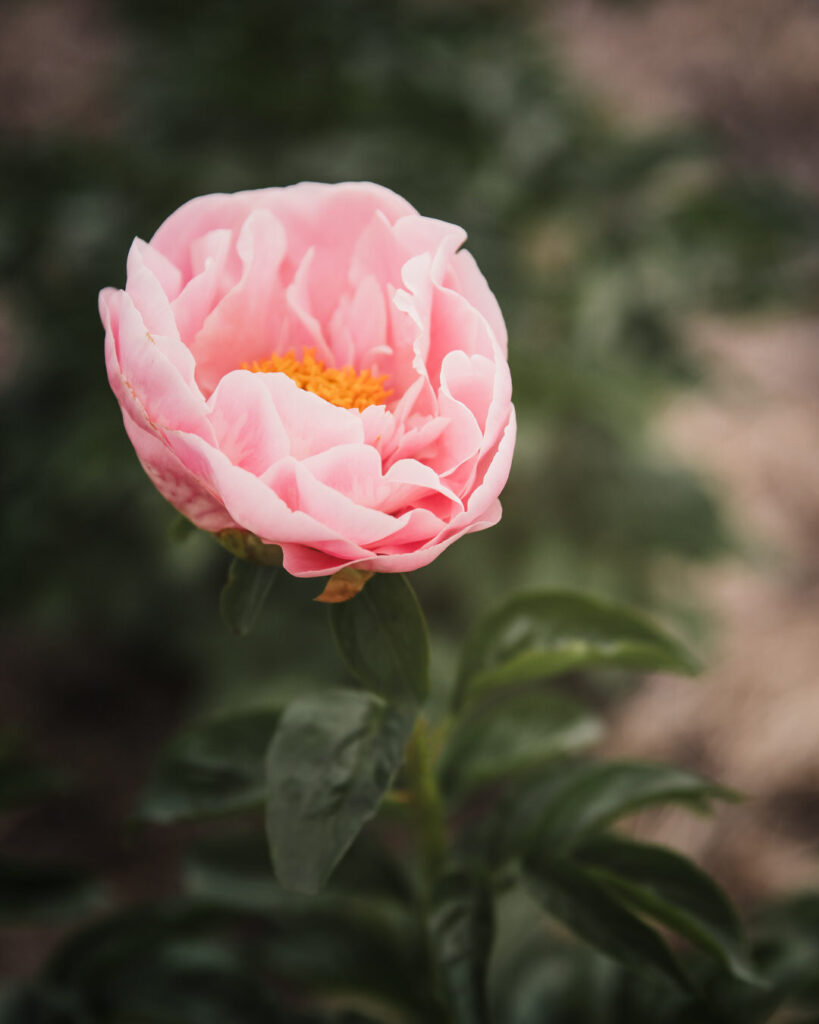
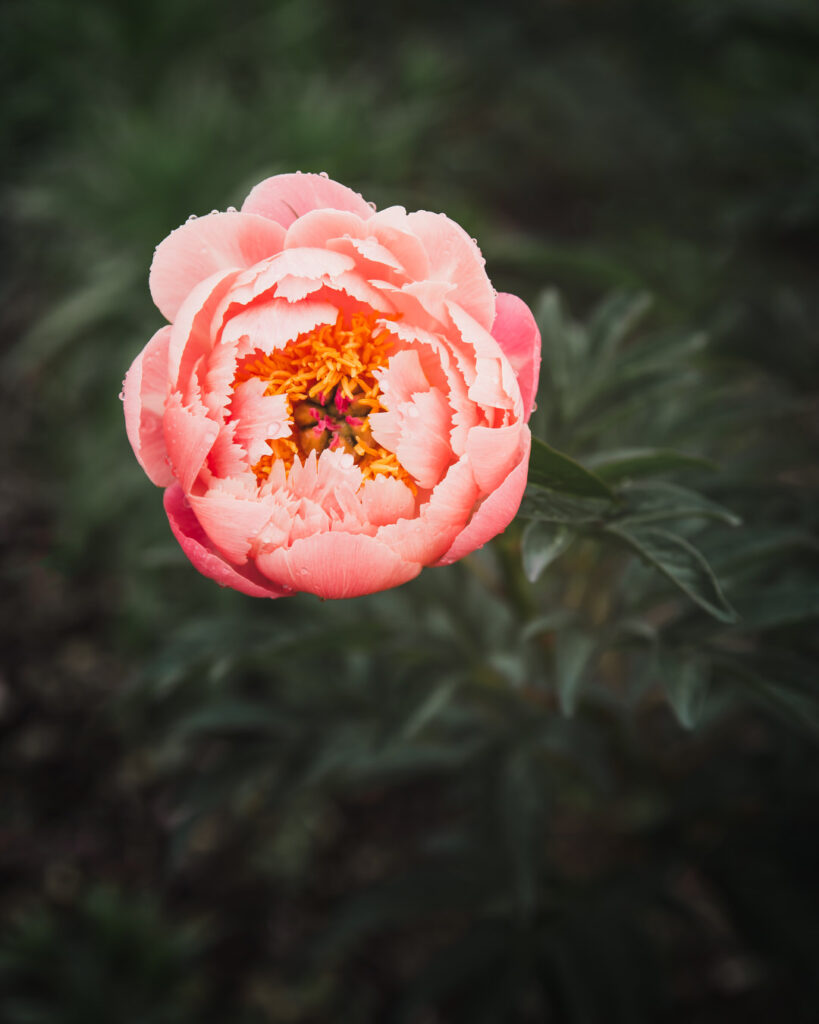
Post-Harvest Treatment and Storage: N&B
Because of the high-dollar value of peonies and how quickly they open, most growers say a cooler is a must (even a refrigerator is better than nothing at all). Postharvest handling notes that the maximum amount of time between harvest and placing flowers in the cooler is 2 hours; the warmer the temperature the shorter the time period. On hot days, they should be brought into the cooler immediately.
If using flowers within one week, Dowling recommends storing in water, but he says if storing for a longer period, they should be stored dry at 35F (and can be stored months this way). Postharvest handling recommends storing at dry at 32–34F (0–1C). Experimentally, a vase life of 4.7 to 8.6 days was obtained after 4 weeks of storage (depending on cultivar). They also note that longer storage of 12 weeks is possible, but vase life and flower size will be reduced and the likelihood of botrytis is greatly increased.
There seems to be great debate as far as how to store them, with growers doing everything from wrapping in plastic, wrapping paper, and using plastic-lined boxes or totes. One thing that all agree on is that flowers must be dry to avoid botrytis. However, while they need to be dry, they also need to be in a relatively humid environment to avoid desiccation (flowers will not rehydrate). SCF and Agronomy journal notes 75–80% relative humidity. Postharvest Handling recommends cardboard boxes lined with plastic, and Dowling recommends wrapping stems in paper jellyroll style so that the blooms are never touching (wrapping 10–20 this way) and stacking in boxes or totes. He does not recommend plastic wrap because any moisture will collect.
When ready to use, stems should be recut and allowed to hydrate for a few hours.
Post-Harvest Treatment and Storage: BTS
I’m still figuring out what the best storage method is for us, as reading all the different methods sort of left my head spinning and I think it has a lot more to do with your unique environment than one perfect way to do it. While I have our cooler set at 34F, it rarely even gets that low because it’s been so hot here and the temperature fluctuates when we are going in and out of the cooler. Right now, I have bulb crates line with plastic wrap. Wrapping stems individually seemed like extra labor, but I am going to experiment with a few this way, because thus far we have only stored a few weeks (and not every bloom is a success). The relative humidity in our cooler is between 70–80% so I was hoping to not have to wrap individually, but I would if it meant longer storage. I’m hoarding some for a wedding July 7, but we have another wedding at the end of July, so I may try and see how long I can push this. Ultimately, I would love to be able to store peonies for a long time, so if you have any suggested literature or even anecdotal information, I’d love to know. I’ve been following this 4-year experiment by the peony society for longer-term storage, and while their efforts have been mostly futile, I commend the effort and am crossing my fingers!
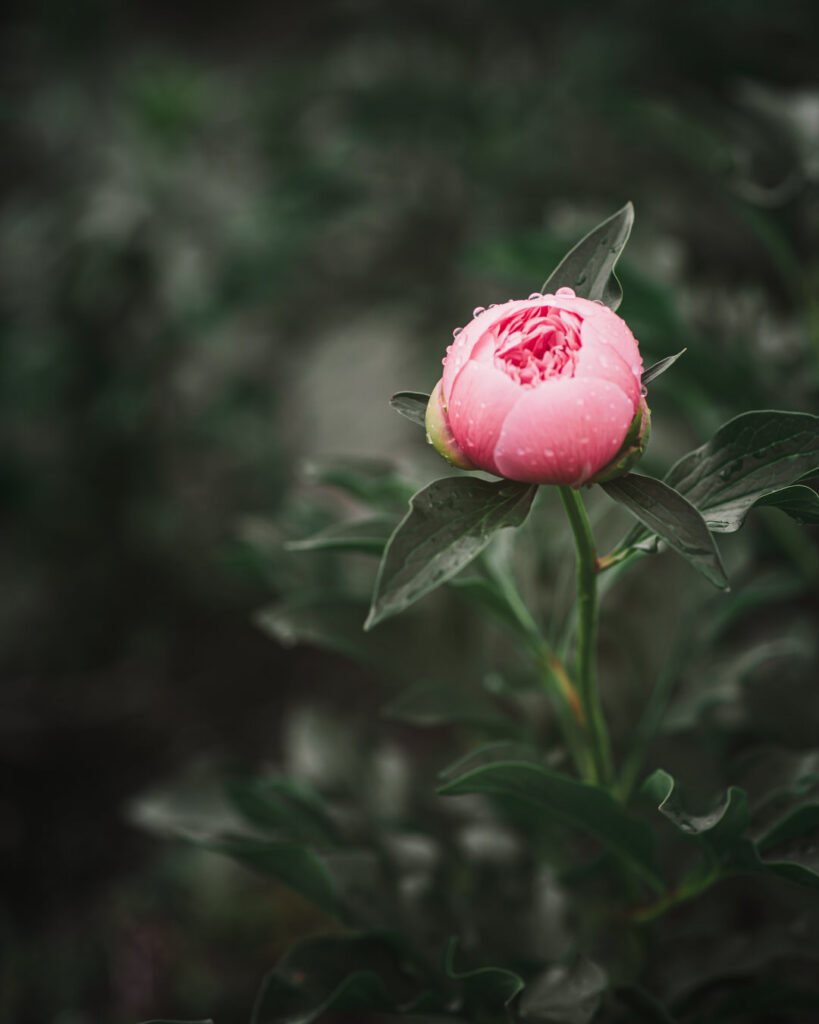
Pests & Disease: N&B
Most sources note that there are not major pest problems with peonies. Ants are common on peonies, but they do not harm them or do they aid in the bloom opening (this a myth, they are simply attracted to the sweet sap). The two most-common disease issues are botrytis and powdery mildew. Proper plant spacing helps avoid this, but the use of fungicides can be employed when springs are particularly wet (Dowling). Peonies should be cut down to the soil line in the fall and all foliage should be thrown out (not composted). Interestingly, Dowling notes that the large producers (like 100s of acres) burn the plant debris (we are big fans of burn piles versus trash).
Pests & Disease: BTS
Thus far, we haven’t had any major issues, but we do cut down our plants to the soil line each fall and all debris is moved to a burn pile far away from any of the production beds (and burned along with other brush and plant material).
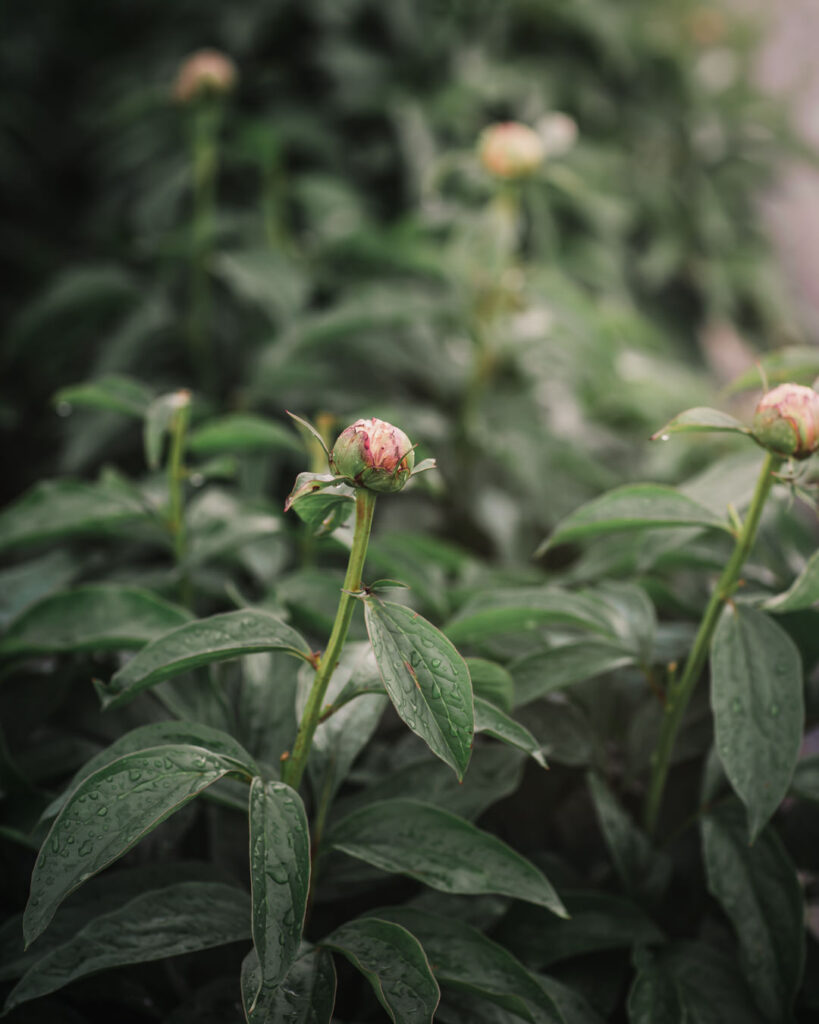
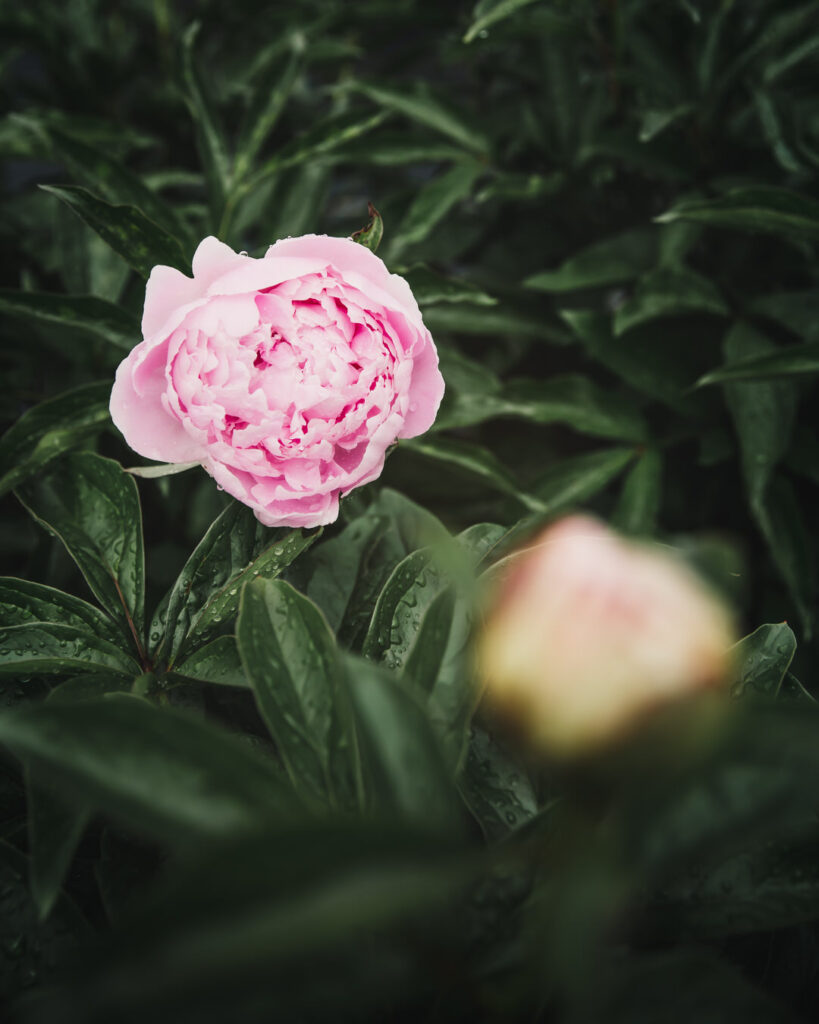
Variety Selection & When to Order: N&B & BTS
When & Where to Order
Dowling recommends ordering wholesale bareroot peonies by June or July. Some wholesale suppliers include Ball, Our American Roots, and Onings.
I just checked Ball, and while there are still some varieties, stock is starting to dwindle. I’ve ordered from both Ball and Onings, but Onings only is shipping via boat this year, so they wouldn’t ship to us until late Nov/Early Dec, which is a little late for my comfort (though I’ve planted as late as late November when our order from Ball was extremely delayed). Most of these places do have a minimum order (for some of the really expensive varieties, you may be able to order as small as 10, but it’s usually 25).
If you are able to order wholesale, but want smaller quantities, The Little Farmhouse Flowers is now offering smaller quantities at wholesale pricing, but you will need to provide a resale certificate.
If you want to order even smaller quantities or do not have a resale certificate, we have decided that we’ll be selling some of our collection this fall for retail (you can sign up here for email reminders and 10% off your order if that interests you). That said, there are plenty of retail suppliers if you do a google search (but I don’t have experience ordering from them).
Variety Selection
Here is a fun guide from the Alaska Peony Cooperative, that dives deep on 24 outstanding varieties as selected by their farmer cooperative.
Dowling recommends the following:
On our farm, we are currently growing:
- Angel Cheeks
- Bowl of Cream
- Brother Chuck
- Coral Charm
- Coral Sunset
- Duchess De Nemours
Elsa Sass - Etched Salmon
Krinkled white - Mons Jules Ellie
- Nancy Nora
- Nick Shaylor
- Pastelegeance
- Pillow Talk
- Pink Hawaiian Coral
- Salmon Dream
- Sarah Bernhardt
- Sunny Girl
Adding this fall (many of these were actually past orders that got cancelled, so crossing my fingers):
- Alertie
- Amalia Olson
- Chiffon Parfait
- Claire De Lune
- Colonel Owen Cousins
- Lady Alexandra Duff
- Lemon Chiffon
- Mother’s Choice
- My Love
- Shirley Temple
- Debating on adding Red Charm (I’m usually not a huge red fan, but it’s grown on me). Thoughts?
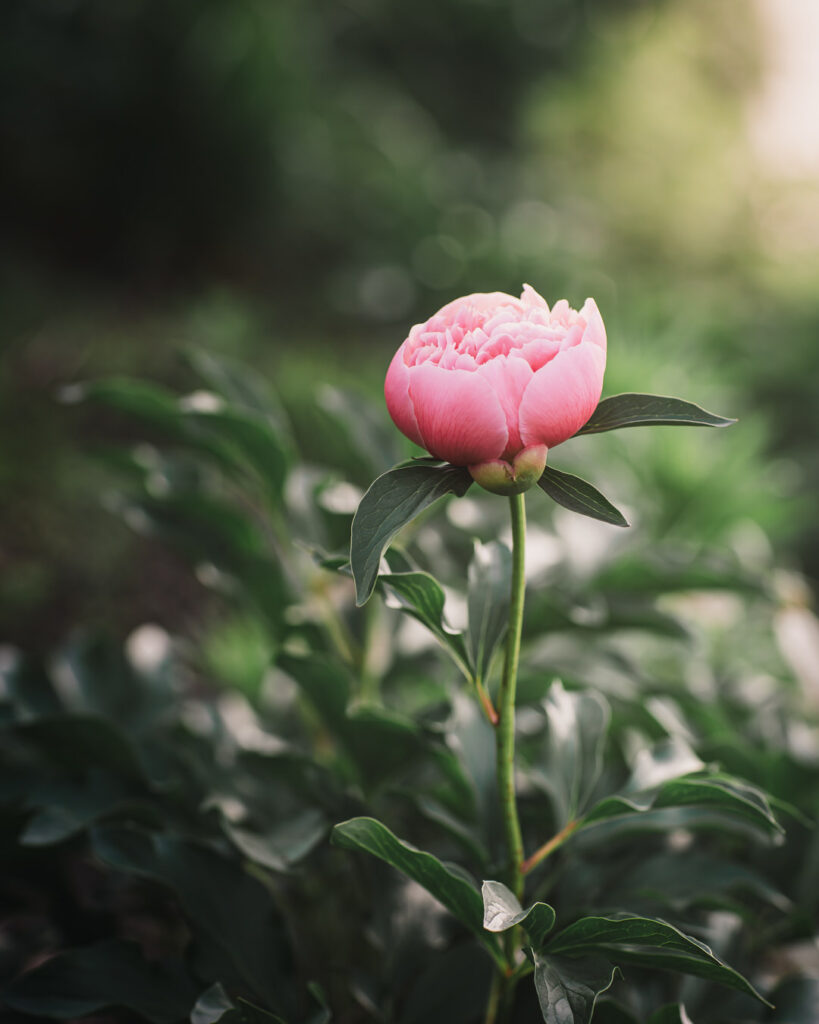
Pricing: N&B
As Dowling says, do not undercharge for your peonies. He recommends retail to consumer (farmer’s market, farm stand, PYO), $4–5. Florist, $2.50–$4.95. He did pull these prices from the Boston Terminal, which is what I always include here each month.
BOSTON Ornamental Terminal Prices as of 16-MAY-2023:
PEONY: MARKET STEADY. bunched 10s NL long 25.00 per stem NL long 3.50-5.50 mostly 5.50
Pricing: BTS
I sell 5-stem bunches for $30 at our pickup locations ($40 delivered). Florist or bulk bride orders >20 $5/stem >50 $4/stem (though I have not had anyone order that many).
Design: BTS Only
Peonies are so gorgeous, they basically design themselves. What I love most about them though is that they have really sturdy stems, which make them great for supporting other flowers in a bridal bouquet. They *could* be considered a bit large for some designs, but I love the wow factor. I even used them as the focal for some small arrangements for an event this spring (we did flowers for IndyCar Road America this past week, eeek!). Even though they are large, I thought they looked nice.
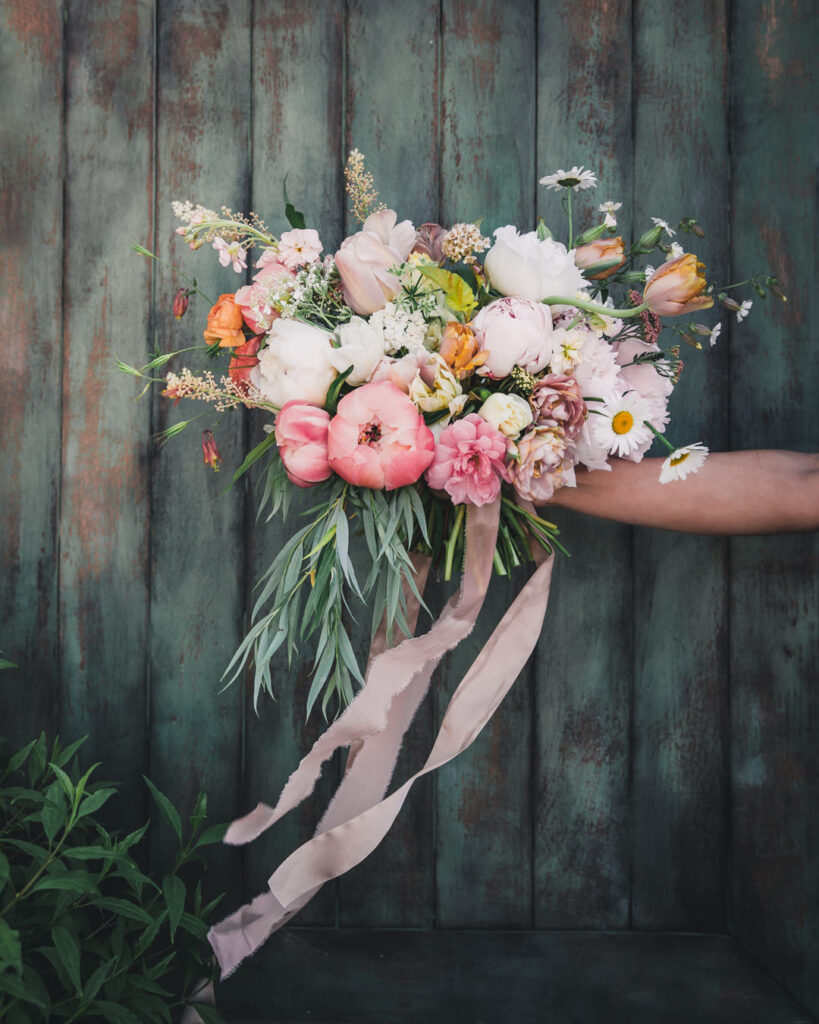
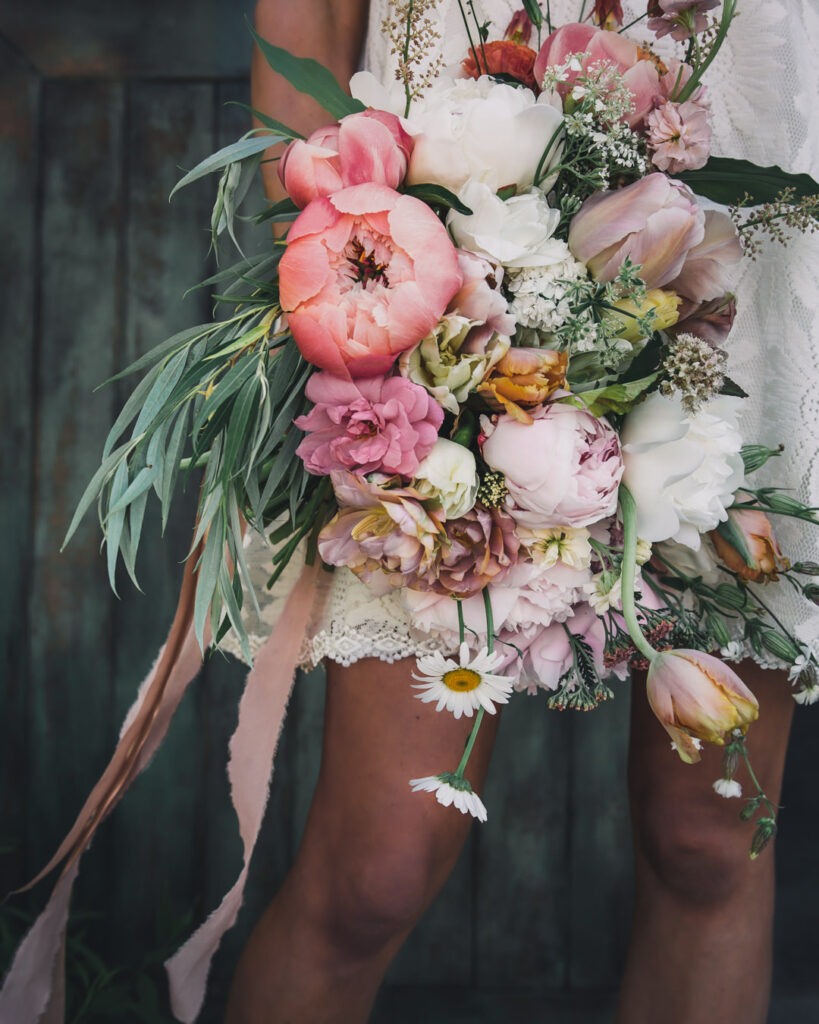
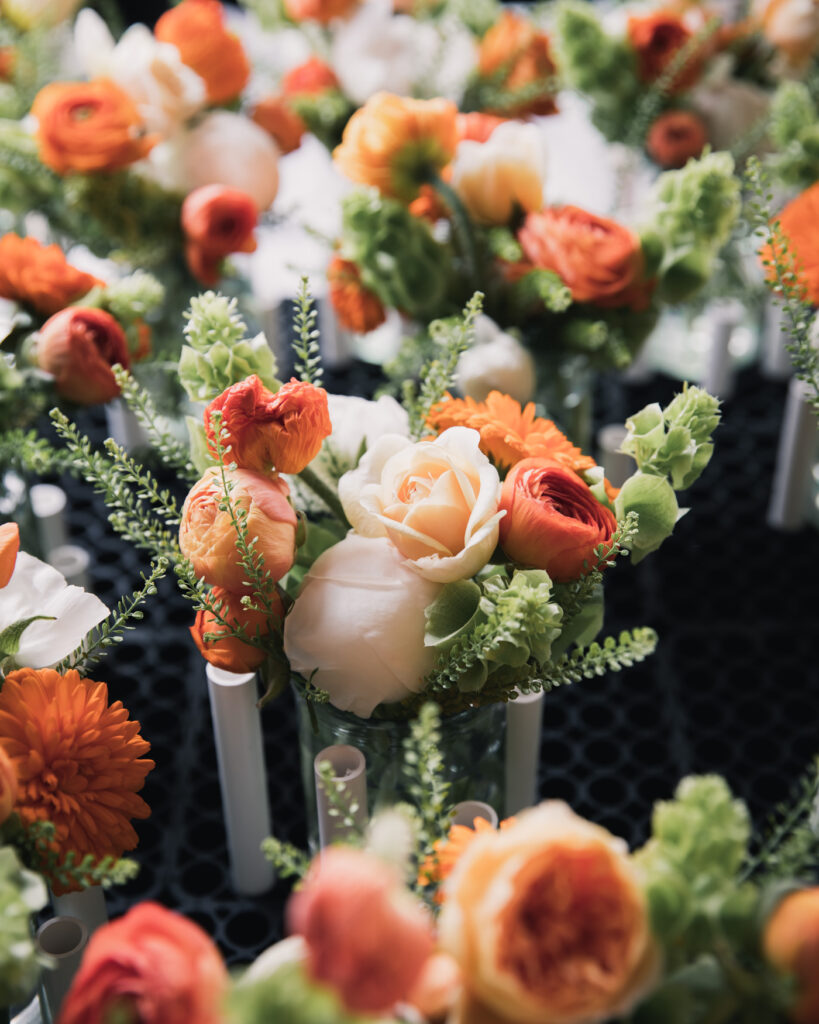
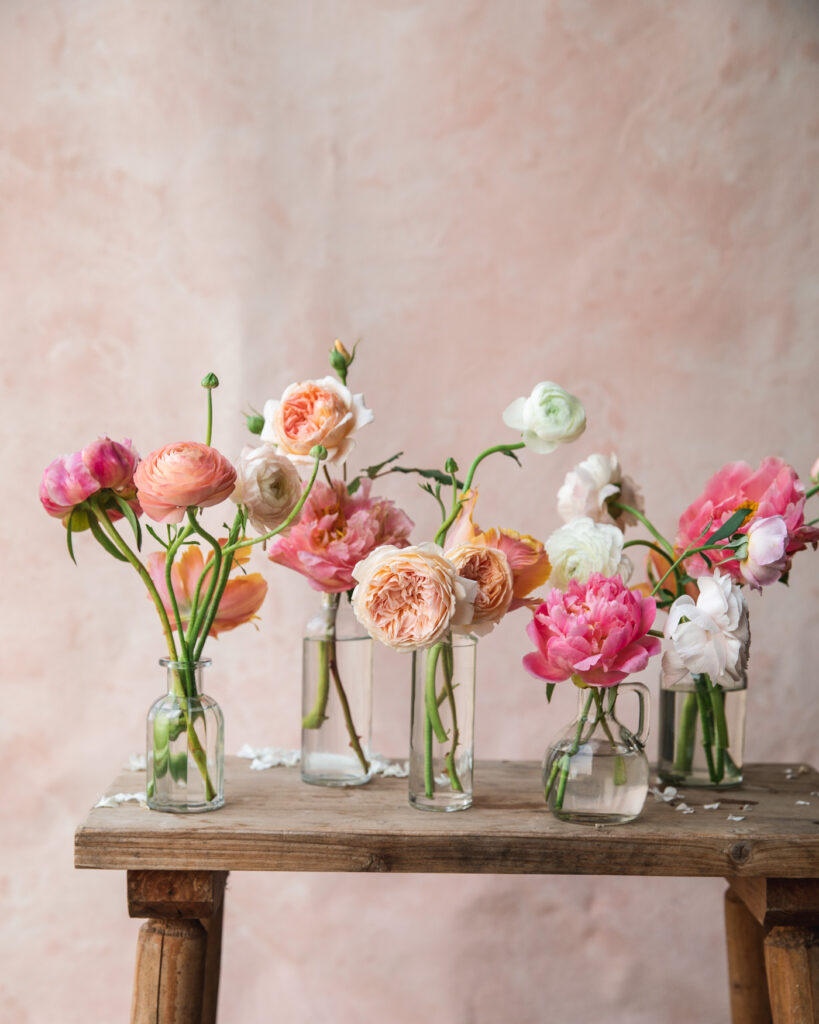
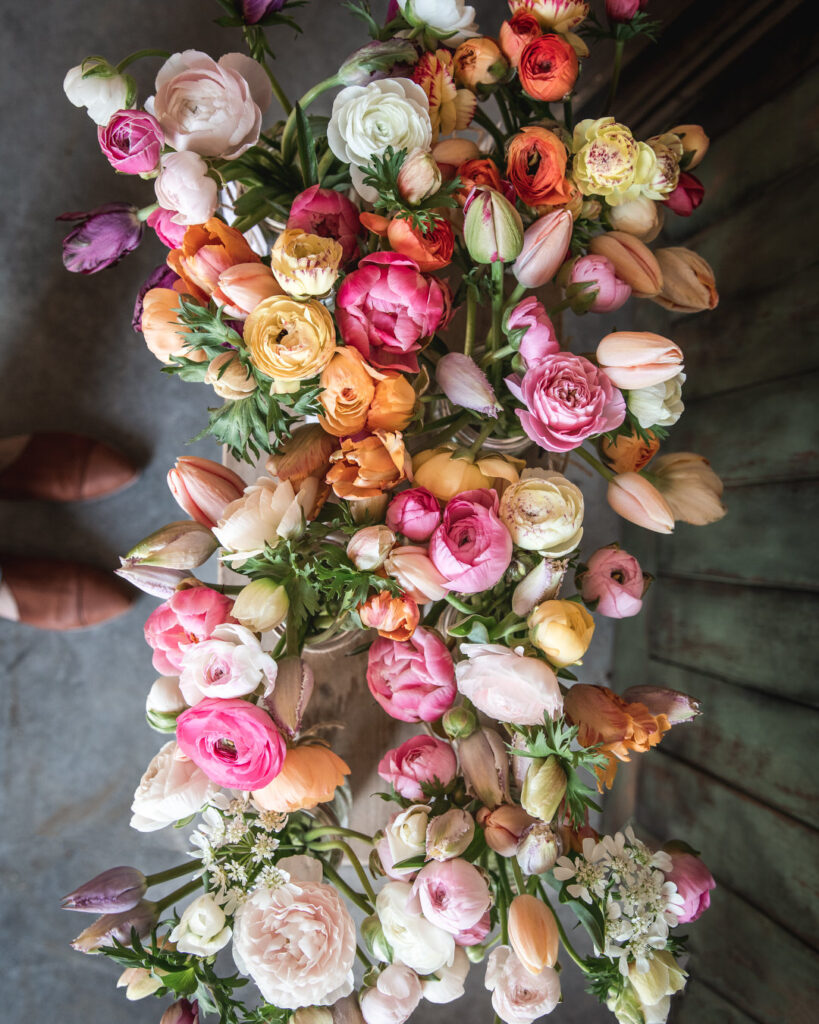
Wrap Up
OK, my friend, that is IT for June’s Plant Profile. What do you think? Did you find some useful nuggets? Is there anything that’s unclear or you wish I would have covered? Or is your head spinning? No worries, you will get a copy of this at the end of July, so you can always refer back it. Tip: use the find shortcut (Ctrl+F on a PC or Command+F on a Mac to search for any word or term).
Have any questions or something you want to share with me or others? I know I say this ad nauseam, but I truly believe in the power of the collective and that we all have something unique and powerful to share, so please leave a question or share a comment below. We’re all better for it, and I thank you in advance!
Cheers pal!
Hi –
I’m in zone 7a (changed from 6b this year). Inevitably we get a killing frost/ice event after the majority of our peonies (500) have begun to bud up. I have hooped and row covered them each season when that happens, but as they get larger it’s becoming a little tricky. Once the peonies have set bud, it is still wise/necessary to cover them when we get that last rogue frost?
Hi, Anne:
We can have some wild fluctuating temps in the midwest too, so I can relate there! While dormant peony plants can survive extremely cold temperatures, new vegetative growth can only handle so much cold. How much really depends on how cold for how long. You are smart to cover them. I would say it’s a wise idea to cover/protect them if temps are going to be below 30F for any extended period. A short period in the high 20s *might* be ok, but factors like windchill can also have an impact. I’ve read about a larger peony farm reporting that temps in the mid-20s caused frost damage on about half of blooms, but foliage/stems were OK. The American Peony Society states that, in general, temperatures which fall below 25 F may cause lasting damage. The foliage could bounce back that season or die back and the plant will go dormant (but it should return the following season).
I hope that helps!
Maggie